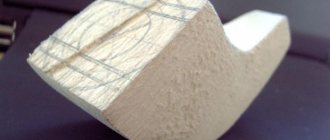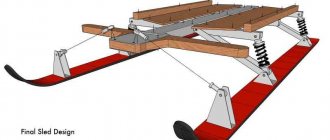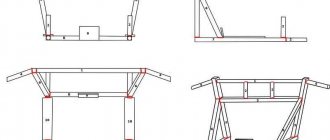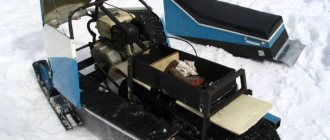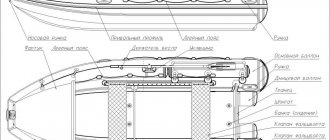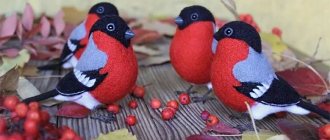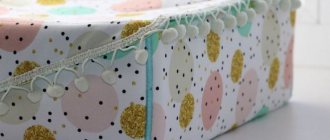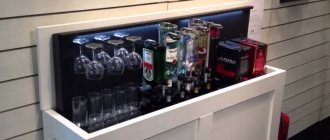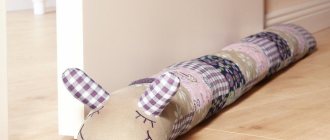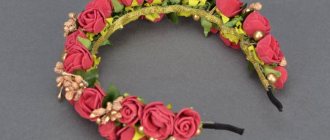We bring to your attention a huge scope and the best selection of ideas for creativity from the site dnevnikmastera.ru on the topic of fake traffic lights.
Since childhood, we have been taught the importance of following traffic rules, but what is the first thing that comes to mind when this is mentioned? Right! Traffic light!
The variations in the variety of manufacturing are so diverse that it is unlikely to be possible to combine everything in one review, however, our specialists from the website dnevnikmastera.ru have selected for you the most interesting and high-quality ideas that can easily be made at home, literally from scrap materials.
A fake traffic light can be assigned to be made when children are learning the rules of the road, or, for example, when it is necessary to make a miniature of a pedestrian crossing.
What might you need?
- Ready to use table
- Scissors,
- Glue,
- Paints,
- Plasticine,
- Additional materials.
As a rule, DIY traffic light crafts for children become one of their favorites.
There are absolutely no restrictions on your imagination, since a traffic light can be made from almost anything. The main thing is to maintain the correctness of the colors, but even here sometimes you can give free rein to little authors.
Preparing the desktop
As a rule, any fakes, or rather, their manufacture, should begin with the preparation of available materials and a workbench. To prepare, cover the table and prepare paper, glue and other materials that you have.
Anything will do, the main thing is a round shape for a traffic light.
Important!!! Be sure to supervise young children when using scissors and provide guidance on how to hold them and cut shapes correctly.
Road signs for games in the yard
You will need to take white plastic and cut it into the shape of a road sign: round, square or triangular. It is advisable to find an image of the sign on the Internet and print it out. After this, the picture should be transferred to self-adhesive paper, from which a stencil will be created.
Cut out areas that require painting. Glue the rest of the part onto the plastic. Paint the cut out areas with acrylic paint, forming central elements from it. Let the paint dry completely, then remove the stencil.
To disguise the plastic cut, attach a plastic profile to the edges of the sign. It will form a neat white border.
Secure the workpiece to a wooden strip with a cross fixed at the bottom.
Traffic light made from plastic cups
As you may have guessed, the traffic light will be made using plastic or paper cups. You can work with fakes using either paint or paper appliqué. No difference. All you need to do is trim the bottoms of three glasses. Next, you take two glasses and attach them neck to neck to each other. After the model has dried, we can begin to attach our cut bottoms.
Fill them with the desired colors and be sure to glue the traffic light to the leg. Color the work and that's it. Ready!
Usually, making a traffic light for kindergarten puts many parents into a stupor. Now we will try to show how to make a very effective and fast fake - this is a traffic light book.
Wall newspaper
The wall newspaper helps to consolidate the acquired knowledge and will serve as an excellent craft on the topic of road safety. For young intellectuals, it can be designed as a crossword puzzle or a tea puzzle. It can be filled with information about traffic rules competitions or the intricacies of the work of a guard at an intersection.
Master class on making wall newspapers
- Take whatman paper in A1 format and measure its length and width.
- Prepare the plywood and cut it to size, then mount it to the wall.
- On whatman paper, mark places for the main heading, thematic sections and articles.
- Fill the wall newspaper with the necessary material using paints, brushes, markers and pencils.
- Take the buttons and attach the wall newspaper to the plywood.
Our didactic material on the topic of road safety is ready. Teaching staff can be offered to hold a competition to create wall newspapers between school classes. A stand with a colorfully decorated wall newspaper is perfect for a themed event.
Traffic light made from disks
The traffic light craft made from disks also looks very impressive. For it you only need three old disks, which can be connected together with a thread. Below are a few options for creativity. You can paint your traffic light and hang it like a decoration, or you can cover it or cover it with the desired color of fabric or paper. The result will also be a fairly simple and entertaining fake.
Air
Children will like it and will decorate an event dedicated to knowledge of traffic rules, a traffic light made of balloons.
You will need:
- 7-10 black balls;
- 3 large balls of signal colors;
- rack.
The balls are fixed on the rack: the black ones serve as the base, the signal ones are placed in the correct sequence.
Creativity and imagination will help your child create a work of art and forever remember the rules for crossing the road at the right traffic lights.
Mosaic traffic light
In general, everything in this fake is extremely simple, so that a child even of kindergarten age can easily cope with it. All you need is colored paper cut out in the desired colors. Next, you need to make a stencil on an A4 sheet (you can just outline it with a pencil). Next, you need to apply glue to the desired area and sprinkle colored pieces of paper on it. It will be especially interesting for the youngest to fill the space of the mosaic, which, by the way, perfectly develops fine motor skills.
Traffic light colors
Probably the most popular and easiest option for making a traffic light fake.
All you need to do is make a stencil on paper with a pencil, after which the child paints it with the desired colors.
Fake traffic light in the city
A fairly original idea for which the child is guaranteed to receive a good grade. To make it we will need matchboxes, cardboard, colored paper, and an old shoe box.
As you already understood, this miniature will be in a box. For the base, make the bottom, which will be in the form of our gray or black asphalt.
Matchboxes are stacked in houses. By the way, you can also make small cars out of boxes. To do this, just glue the wheels and paint the car. The boxes, as you already understood, need to be covered with paper and painted.
After this, all parts and models are placed in a box and glued with glue. The traffic light itself can be made from cardboard and colored paper circles.
It's interesting to know
The prototype of traffic lights is railway semaphores. The first electrical device for regulating automobile traffic was installed in Cleveland on August 5, 1914. This date is considered the traffic light’s birthday and holidays are held annually in its honor. The author of a wonderful invention, thanks to which peace and order reigns on the roads, is Salt Lake City police detective, Lester Wire. He, in turn, borrowed the idea from the English railway engineer John Peake Knight. The Vaira traffic light was a tall, narrow wooden box with a pitched roof. All four sides were equipped with electric lights, painted green and red - similar to railway signals. The box was mounted on a high pole and connected to the trolleybus wires, and the policeman, sitting in a booth at the intersection, controlled the light and sound signals. As a joke, Vair's traffic light was nicknamed the "birdhouse".
Here are some other interesting facts:
- A yellow traffic light was added in 1920. Three-color devices were the first to appear on the streets of New York and Detroit.
- In the USSR, similar electrical regulators were first installed in St. Petersburg and Moscow.
- Scientists have found that red, yellow and green colors have the longest wavelengths in the spectrum. Therefore, they are more visible than others from afar.
- The Japanese first used a blue tint rather than green, but drivers had difficulty recognizing it.
- In London, where the very first mechanical traffic light was once installed, there is a monument in honor of this event. French avant-garde sculptor Pierre Vivan created it in 1998. The monument is made in the form of a giant tree made of traffic lights, which are also in working order.
- In the old quarters of Prague there is a street called Vinarna Certovka, about 0.7 m wide and 10 m long. There are real traffic lights for pedestrians at the entrance and exit. Otherwise, it will be impossible for two oncoming people, even the most graceful build, to pass between the houses.
- In Rio de Janeiro, drivers can run red lights after 10 p.m. and before 5 a.m. to avoid being attacked by street gangs.
- In the near future there will be traffic lights that can be controlled from a smartphone. Special applications will allow pedestrians with disabilities, as well as large groups of children, to extend the green signal in order to cross the road in time.
Plasticine traffic light
The voluminous figurine will look very interesting, and on top of that, it won’t take much time to make. All you need is a base made of plasticine (you can wrap some kind of blank in plasticine to save money), and add circles of plasticine in red, yellow and green colors to the base.
We suggest looking at the photo below for even more ideas and interesting fakes.

